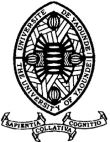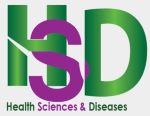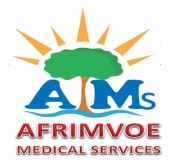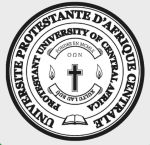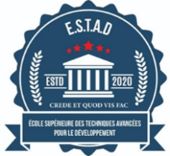Use of Alternative and Complementary Medicines by Cancer Patients at the Yaoundé General Hospital, Cameroon
Utilisation des Médecines Alternatives et Complémentaires par les Patients Cancéreux à l'Hôpital Général de Yaoundé, Cameroun
DOI:
https://doi.org/10.5281/hra.v3i3.6476Keywords:
alternative and complementary medicine, breast cancer, CA 15-3, Yaoundé General Hospital, OncologyAbstract
ABSTRACT
Introduction. In Sub-Saharan Africa (SSA), breast cancer has a prevalence of 54.5% and patients face difficulties in accessing healthcare facilities and medications. This study evaluated the prevalence, types, factors associated with complementary and alternative medicine (CAM) use among breast cancer patients. Materials and methods. This prospective cross-sectional descriptive study was conducted in the Oncology department of the Yaoundé General Hospital. A semi-structured survey was administered to breast cancer patients to collect sociodemographic, clinical, and therapeutic information, along with data on CAM use. Recent CA 15-3 data were extracted from patients' medical records and compared with measurements obtained during the study. Results. One hundred and forty-eight patients were recruited, with an average age of 47.7 ± 10.73 years; the age range of 44 to 54 years (35.81%) was the most represented. Invasive ductal carcinoma (62.16%) was the predominant histological type, chemotherapy was the most common treatment (58.09%), and adverse effects were reported by 68.91% (102/148) of participants. The prevalence of CAM use was 61.48% (91/148), represented by medicinal plants such as Hibiscus sabdariffa (12.03%), Annona muricata (9.77%), and Gnetum africanum (9.4%). CAM use was correlated with professional status (p=0.04), chemotherapy (p=0.03), and the occurrence of adverse effects (p=0.0002). A non-significant decrease of CA 15-3 level was observed. Conclusion. More than half of the participants used CAM, primarily based on medicinal plants. The combination of CAM and conventional medicine could improve the quality of life for patients with breast cancer.
RÉSUMÉ
Introduction. En Afrique sub-saharienne la prévalence du cancer du sein est de 54,5%, et les patientes ont des difficultés à accéder aux soins de santé. Ce travail a évalué la prévalence, les types, les facteurs associés à l’utilisation des médecines alternatives et complémentaires (MAC). Méthodes. Cette étude descriptive transversale prospective a été menée au service d’Oncologie de l’Hôpital Général de Yaoundé. Elle a concerné les patientes atteintes du cancer du sein dont les informations sociodémographiques, cliniques, thérapeutiques et celles liées à l’utilisation de la MAC ont été collectées. Les données récentes du CA 15-3 des participantes ont été extraites des dossiers médicaux, et mesurées expérimentalement pendant l’étude. Résultats. Cent quarante-huit patientes ont été recrutées dont l’âge moyen était de 47,7 ± 10,73 ans, l’intervalle de 44 à 54 (35,81%) était le plus représenté. Le carcinome canalaire infiltrant (62,16%) était le type histologique majoritaire, la chimiothérapie le traitement le plus utilisé (58,09%) et les effets indésirables ont concerné 68,91% (102/148) participantes. La prévalence d’utilisation de la MAC était de 61,48% (91/148) avec Hibiscus sabdariffa (12,03%), Annona muricata (9,77%) et Gnetum africanum (9,4%). L’utilisation de la MAC était corrélée au statut professionnel (p=0.04), à la chimiothérapie (p=0.03) et la survenue d’effets indésirables (p=0.0002). Une diminution non-significative du CA 15-3 a été observée. Conclusion. Plus de la moitié des patientes utilisent la MAC à l’Hôpital Général de Yaoundé, principalement à base de plantes médicinales. L’association de la MAC et la médecine conventionnelle est une piste à explorer pouvant améliorer la qualité de vie des patientes.
References
1. Arnold M, Morgan E, Rumgay H, Mafra A, Singh D, Laversanne M, et al. Current and future burden of breast cancer: Global statistics for 2020 and 2040. The Breast [Internet]. 2022 Sep 2;66:15–23. Available from: https://doi.org/10.1016/j.breast.2022.08.010
2. Bray F, Laversanne M, Sung H, Ferlay J, Siegel RL, Soerjomataram I, et al. Global cancer statistics 2022: GLOBOCAN estimates of incidence and mortality worldwide for 36 cancers in 185 countries. CA a Cancer Journal for Clinicians [Internet]. 2024 Apr 4;74(3):229–63. Available from: https://doi.org/10.3322/caac.21834
3. Giaquinto AN, Sung H, Miller KD, Kramer JL, Newman LA, Minihan A, et al. Breast Cancer Statistics. 2022. CA a Cancer Journal for Clinicians [Internet]. 2022 Oct 3;72(6):524–41. Available from: https://doi.org/10.3322/caac.21754
4. Global Cancer Observatory. Statistics at a glance. 2022 [Internet]. Global Cancer Observatory: Cancer Today. International Agency for Research on Cancer; 2024. Available from: https://gco.iarc.who.int/media/globocan/factsheets/populations/900-world-fact-sheet.pdf
5. Ikechukwu C. Breast Cancer Knowledge among Women in Ebonyi State. Nigeria: Implication for Women Breast Cancer Education. Journal of Health Education Research & Development [Internet]. 2015 Jan 1;03(02). Available from: https://doi.org/10.4172/2380-5439.1000129
6. Ferlay J, Soerjomataram I, Dikshit R, Eser S, Mathers C, Rebelo M, et al. Cancer incidence and mortality worldwide: Sources. methods and major patterns in GLOBOCAN 2012. International Journal of Cancer [Internet]. 2014 Sep 13;136(5). Available from: https://doi.org/10.1002/ijc.29210
7. Eng A, McCormack V, Dos-Santos-Silva I. Receptor-Defined Subtypes of Breast Cancer in Indigenous Populations in Africa: A Systematic Review and Meta-Analysis. PLoS Medicine [Internet]. 2014 Sep 9;11(9):e1001720. Available from: https://doi.org/10.1371/journal.pmed.1001720
8. Ministry of Public Health of Cameroon. National Strategic Plan for Cancer Prevention and Control. [Online]. Yaoundé: Ministry of Public Health; June 2020. [Cited on 07/30/24]. Available: https://www.iccp-portal.org/system/files/plans/FINAL%20COPY%20PSNPLCa%20FRENCH.pdf
9. Global Cancer Observatory. Statistics at a glance. 2022 [Internet]. Global Cancer Observatory: Cancer Today. International Agency for Research on Cancer; 2024. Available from: https://gco.iarc.who.int/media/globocan/factsheets/populations/120-cameroon-fact-sheet.pdf
10. Cardoso F, Bese N, Distelhorst SR, Bevilacqua JLB, Ginsburg O, Grunberg SM, et al. Supportive care during treatment for breast cancer: Resource allocations in low- and middle-income countries. A Breast Health Global Initiative 2013 consensus statement. The Breast [Internet]. 2013 Aug 31;22(5):593–605. Available from: https://doi.org/10.1016/j.breast.2013.07.050
11. Kaur S, Mayanglambam P, Bajwan D, Thakur N. Chemotherapy and its Adverse Effects – A Systematic Review. International Journal of Nursing Education and Research [Internet]. 2022 Nov 16;399–402. Available from: https://doi.org/10.52711/2454-2660.2022.00090.
12. Mwaka AD, Abbo C, Kinengyere AA. Traditional and Complementary Medicine Use Among Adult Cancer Patients Undergoing Conventional Treatment in Sub-Saharan Africa: A Scoping Review on the Use. Safety and Risks Cancer Management and Research [Internet]. 2020 May 1;Volume 12:3699–712. Available from: https://doi.org/10.2147/cmar.s251975
13. Ong’udi M, Mutai P, Weru I. Study of the use of complementary and alternative medicine by cancer patients at Kenyatta National Hospital. Nairobi. Kenya. Journal of Oncology Pharmacy Practice [Internet]. 2018 Oct 14;25(4):918–28. Available from: https://doi.org/10.1177/1078155218805543
14. Sooro MA, Thoahlane TS, Ramathebane MV, Mputsoe KA. A preliminary. quantitative study on the use of traditional and complementary medicine by cancer patients seen at the Senkatana Oncology clinic. Maseru. Lesotho. BMC Complementary Medicine and Therapies [Internet]. 2024 Apr 1;24(1). Available from: https://doi.org/10.1186/s12906-024-04388-3
15. World Health Organization. WHO Traditional strategy 2000-2005. [Online]. Geneva: World Health Organization; 2022. [Cité le 30/07/24]. Disponible: WHO_EDM_TRM_2002.1_eng.pdf
16. World Health Organization. WHO Traditional strategy 2014-2023. [Online]. Geneva: World Health Organization; 2013. [Cité le 30/07/24]. Disponible: 9789241506090_eng.pdf (who.int)
17. Bajpai P, Usmani S, Kumar R, Prakash O. Recent advances in anticancer approach of traditional medicinal plants: A novel strategy for cancer chemotherapy. Intelligent Pharmacy [Internet]. 2024 Feb 15;2(3):291–304. Available from: https://doi.org/10.1016/j.ipha.2024.02.001
18. Clement YN, Morton-Gittens J, Basdeo L, Blades A. Francis MJ. Gomes N. et al. Perceived efficacy of herbal remedies by users accessing primary healthcare in Trinidad. BMC Complementary and Alternative Medicine [Internet]. 2007 Feb 7;7(1). Available from: https://doi.org/10.1186/1472-6882-7-4
19. Bishayee A, Rabi T. d-Limonene sensitizes docetaxel-induced cytotoxicity in human prostate cancer cells: Generation of reactive oxygen species and induction of apoptosis. Journal of Carcinogenesis [Internet]. 2009 Jan 1;8(1):9. Available from: https://doi.org/10.4103/1477-3163.51368
20. Legault J, Pichette A. Potentiating effect of β-caryophyllene on anticancer activity of α-humulene. isocaryophyllene and paclitaxel. Journal of Pharmacy and Pharmacology [Internet]. 2007 Nov 22;59(12):1643–7. Available from: https://doi.org/10.1211/jpp.59.12.0005
21. Kang HJ, Lee SH, Price JE, Kim LS. Curcumin Suppresses the Paclitaxel-Induced Nuclear Factor-κB in Breast Cancer Cells and Potentiates the Growth Inhibitory Effect of Paclitaxel in a Breast Cancer Nude Mice Model. The Breast Journal [Internet]. 2009 May 1;15(3):223–9. Available from: https://doi.org/10.1111/j.1524-4741.2009.00709.x
22. Afungchwi GM, Kruger M, Hesseling P, Van Elsland S, Ladas EJ, Marjerrison S. Survey of the use of traditional and complementary medicine among children with cancer at three hospitals in Cameroon. Pediatric Blood & Cancer [Internet]. 2022 Apr 20;69(8). Available from: https://doi.org/10.1002/pbc.29675
23. Ezeome ER, Anarado AN. Use of complementary and alternative medicine by cancer patients at the University of Nigeria Teaching Hospital. Enugu. Nigeria. BMC Complementary and Alternative Medicine [Internet]. 2007 Sep 12;7(1). Available from: https://doi.org/10.1186/1472-6882-7-28
24. Saghir NSE, Adebamowo CA, Anderson BO, Carlson RW, Bird PA, Corbex M, et al. Breast cancer management in low resource countries (LRCs): Consensus statement from the Breast Health Global Initiative. The Breast [Internet]. 2011 Mar 16;20:S3–11. Available from: https://doi.org/10.1016/j.breast.2011.02.006
25. Stöcker A, Mehnert-Theuerkauf A, Hinz A, Ernst J. Utilization of complementary and alternative medicine (CAM) by women with breast cancer or gynecological cancer. PLoS ONE [Internet]. 2023 May 12;18(5):e0285718. Available from: https://doi.org/10.1371/journal.pone.0285718
26. Lo-Fo-Wong DNN, Ranchor AV, De Haes HCJM. Sprangers MAG. Henselmans I. Complementary and alternative medicine use of women with breast cancer: Self-help CAM attracts other women than guided CAM therapies. Patient Education and Counseling [Internet]. 2012 Mar 29;89(3):529–36. Available from: https://doi.org/10.1016/j.pec.2012.02.019
27. Anderson KN, Jacobson J, Li H, Hershman D, Gorroochurn P, Grann V. Prevalence of CAM in a cohort of breast cancer patients and controls. Journal of Clinical Oncology [Internet]. 2004 Jul 15;22(14_suppl):8131. Available from: https://doi.org/10.1200/jco.2004.22.90140.8131
28. Sárváry A, Sárváry A. Use of complementary and alternative medicine among breast cancer patients in Hungary: A descriptive study. Complementary Therapies in Clinical Practice [Internet]. 2019 Feb 26;35:195–200. Available from: https://doi.org/10.1016/j.ctcp.2019.02.013
29. Crichton M, Strike K, Isenring E, McCarthy AL, Marx W, Lohning A et al. “It’s natural so it shouldn’t hurt me”: Chemotherapy patients’ perspectives. experiences. and sources of information of complementary and alternative medicines. Complementary Therapies in Clinical Practice [Internet]. 2021 Mar 12;43:101362. Available from: https://doi.org/10.1016/j.ctcp.2021.101362
30. Han S, Jang BH, Suh HS, Hwang DS. Complementary medicine use and costs in patients with breast cancer who experienced treatment-related side effects: A cross-sectional survey in Korea. Complementary Therapies in Medicine [Internet]. 2019 Apr 19;44:210–7. Available from: https://doi.org/10.1016/j.ctim.2019.04.013
31. Ngowa JDK, Kasia JM, Yomi J, Nana AN, Ngassam A, Domkam I, et al. Breast Cancer Survival in Cameroon: Analysis of a Cohort of 404 Patients at the Yaoundé General Hospital. Advances in Breast Cancer Research [Internet]. 2015 Jan 1;04(02):44–52. Available from: https://doi.org/10.4236/abcr.2015.42005
32. Aliyu U, Awosan K, Oche M, Taiwo A, Jimoh A, Okuofo E. Prevalence and correlates of complementary and alternative medicine use among cancer patients in usmanu danfodiyo university teaching hospital. Sokoto. Nigeria. Nigerian Journal of Clinical Practice [Internet]. 2017 Jan 1;20(12):1576. Available from: https://doi.org/10.4103/njcp.njcp_88_17
33. Zingue S, Atenguena EO, Zingue LL, Tueche AB, Njamen D, Nkoum AB, et al. Epidemiological and clinical profile. and survival of patients followed for breast cancer between 2010 and 2015 at the Yaoundé General Hospital. Cameroon. Pan African Medical Journal [Internet]. 2021 Jan 1;39. Available from: https://doi.org/10.11604/pamj.2021.39.182.26866
34. Łukasiewicz S, Czeczelewski M, Forma A, Baj J, Sitarz R, Stanisławek A. Breast Cancer—Epidemiology. Risk Factors. Classification. Prognostic Markers. and Current Treatment Strategies—An Updated Review. Cancers [Internet]. 2021 Aug 25;13(17):4287. Available from: https://pubmed.ncbi.nlm.nih.gov/34503097/
35. Ingrand I, Defossez G, Lafay‐Chebassier C, Chavant F, Ferru A, Ingrand P, et al. Serious adverse effects occurring after chemotherapy: A general cancer registry‐based incidence survey. British Journal of Clinical Pharmacology [Internet]. 2019 Oct 28;86(4):711–22. Available from: https://doi.org/10.1111/bcp.14159
36. Fisusi FA, Akala EO. Drug Combinations in Breast Cancer Therapy. Pharmaceutical Nanotechnology [Internet]. 2019 Jan 22;7(1):3–23. Available from: https://doi.org/10.2174/2211738507666190122111224
37. Naja F, Fadel RA, Alameddine M, Aridi Y, Zarif A, Hariri D, et al. Complementary and alternative medicine use and its association with quality of life among Lebanese breast cancer patients: a cross-sectional study. BMC Complementary and Alternative Medicine [Internet]. 2015 Dec 1;15(1). Available from: https://doi.org/10.1186/s12906-015-0969-9
38. Kiwanuka F. Complementary and Alternative Medicine use: Influence of Patients’ Satisfaction with Medical Treatment among Breast Cancer Patients at Uganda Cancer Institute. Advances in Bioscience and Clinical Medicine [Internet]. 2018 Feb 12;6(1):24. Available from: https://doi.org/10.7575/aiac.abcmed.v.6n.1p.24
39. Jaradat NA, Shawahna R. Eid AM. Al-Ramahi R. Asma MK. Zaid AN. Herbal remedies use by breast cancer patients in the West Bank of Palestine. Journal of Ethnopharmacology [Internet]. 2015 Dec 4;178:1–8. Available from: https://doi.org/10.1016/j.jep.2015.11.050
40. Afifi FU, Wazaify M, Jabr M, Treish E. The use of herbal preparations as complementary and alternative medicine (CAM) in a sample of patients with cancer in Jordan. Complementary Therapies in Clinical Practice [Internet]. 2010 Jun 10;16(4):208–12. Available from: https://doi.org/10.1016/j.ctcp.2010.05.001
41. Mwaka AD, Abbo C. Kinengyere AA. Traditional and Complementary Medicine Use Among Adult Cancer Patients Undergoing Conventional Treatment in Sub-Saharan Africa: A Scoping Review on the Use. Safety and Risks. Cancer Management and Research [Internet]. 2020 May 1;Volume 12:3699–712. Available from: https://doi.org/10.2147/cmar.s251975
42. Asuzu CC, Elumelu‐Kupoluyi T. Asuzu MC. Campbell OB. Akin‐Odanye EO. Lounsbury D. A pilot study of cancer patients’ use of traditional healers in the Radiotherapy Department. University College Hospital. Ibadan. Nigeria. Psycho-Oncology [Internet]. 2015 Nov 17;26(3):369–76. Available from: https://doi.org/10.1002/pon.4033
43. James PB, Wardle J, Steel A, Adams J. Traditional. complementary and alternative medicine use in Sub-Saharan Africa: a systematic review. BMJ Global Health [Internet]. 2018 Oct 1;3(5):e000895. Available from: https://doi.org/10.1136/bmjgh-2018-000895
44. Yarney J, Donkor A, Opoku SY, Yarney L, Agyeman-Duah I, Abakah AC et al. Characteristics of users and implications for the use of complementary and alternative medicine in Ghanaian cancer patients undergoing radiotherapy and chemotherapy: a cross- sectional study. BMC Complementary and Alternative Medicine [Internet]. 2013 Jan 19;13(1). Available from: https://doi.org/10.1186/1472-6882-13-16
45. Erku DA. Complementary and Alternative Medicine Use and Its Association with Quality of Life among Cancer Patients Receiving Chemotherapy in Ethiopia: A Cross-Sectional Study. Evidence-based Complementary and Alternative Medicine [Internet]. 2016 Jan 1;2016(1). Available from: https://doi.org/10.1155/2016/2809875
46. Malacrida A, Erriquez J, Hashemi M, Rodriguez-Menendez V, Cassetti A, Cavaletti G, et al. Evaluation of antitumoral effect of Hibiscus sabdariffa extract on human breast cancer cells. Biochemistry and Biophysics Reports [Internet]. 2022 Sep 27;32:101353. Available from: https://doi.org/10.1016/j.bbrep.2022.101353
47. Bassong TR, Kenmogne LV, Awounfack CF, Ndinteh DT, Njamen D, Zingue S. Effects of Hibiscus sabdariffa Calyxes Aqueous Extract on Antioxidant Status and Histopathology in Mammary Tumor-Induced in Rats. Evidence-based Complementary and Alternative Medicine [Internet]. 2022 Apr 13;2022:1–13. Available from: https://doi.org/10.1155/2022/9872788
48. Silihe KK, Mbou WD, Pambe JCN, Kenmogne LV, Maptouom LF, Sipping MTK, et al. Comparative anticancer effects of Annona muricata Linn (Annonaceae) leaves and fruits on DMBA-induced breast cancer in female rats. BMC Complementary Medicine and Therapies [Internet]. 2023 Jul 15;23(1). Available from: https://doi.org/10.1186/s12906-023-04073-x
49. Ilango S, Sahoo DK, Paital B, Kathirvel K, Gabriel JI, Subramaniam K, et al. A Review on Annona muricata and Its Anticancer Activity. Cancers [Internet]. 2022 Sep 19;14(18):4539. Available from: https://doi.org/10.3390/cancers14184539
50. Ali F, Assanta MA, Robert C. Gnetum africanum: A Wild Food Plant from the African Forest with Many Nutritional and Medicinal Properties. Journal of Medicinal Food [Internet]. 2011 Aug 24;14(11):1289–97. Available from: https://doi.org/10.1089/jmf.2010.0327
51. Corner J, Yardley J, Maher EJ, Roffe L, Young T, Maslin-Prothero S, et al. Patterns of complementary and alternative medicine use among patients undergoing cancer treatment. European Journal of Cancer Care [Internet]. 2009 Apr 21;18(3):271–9. Available from: https://doi.org/10.1111/j.1365-2354.2007.00911.x
52. Zhang L, Zhang Y, Zhao P, Huang SM. Predicting Drug–Drug Interactions: An FDA Perspective. The AAPS Journal [Internet]. 2009 May 5;11(2):300–6. Available from: https://doi.org/10.1208/s12248-009-9106-3
53. Clairet AL, Boiteux-Jurain M, Curtit E, Jeannin M, Gérard B, Nerich V, et al. Interaction between phytotherapy and oral anticancer agents: prospective study and literature review. Medical Oncology [Internet]. 2019 Apr 16;36(5). Available from: https://doi.org/10.1007/s12032-019-1267-z
54. Fejzić H, Mujagić S, Azabagić S, Burina M. Tumor marker CA 15-3 in breast cancer patients. Acta Medica Academica [Internet]. 2015 Jun 2;44(1):39–46. Available from: https://doi.org/10.5644/ama2006-124.125
55. Steinauer K, Huang DJ, Eppenberger-Castori S, Amann E, Güth U. Bone metastases in breast cancer: Frequency. metastatic pattern and non-systemic locoregional therapy. Journal of Bone Oncology [Internet]. 2014 May 1;3(2):54–60. Available from: https://doi.org/10.1016/j.jbo.2014.05.001
56. Bai X, Ta N, Gong GH, Zhang B, Wei CX. Effects of Integrated Chinese Traditional Medicine and Conventional Western Medicine on the Quality of Life of Breast Cancer Patients: A Systematic Review and Meta-Analysis. Evidence-based Complementary and Alternative Medicine [Internet]. 2022 Jan 7;2022:1–19. Available from: https://doi.org/10.1155/2022/3123878
57. Zhu L, Li L, Li Y, Wang J. Wang Q. Chinese Herbal Medicine as an Adjunctive Therapy for Breast Cancer: A Systematic Review and Meta-Analysis. Evidence-based Complementary and Alternative Medicine [Internet]. 2016 Jan 1;2016(1). Available from: https://doi.org/10.1155/2016/9469276
58. Xue JX, Zhu ZY, Bian WH, Yao C. The Traditional Chinese Medicine Kangai Injection as an Adjuvant Method in Combination with Chemotherapy for the Treatment of Breast Cancer in Chinese Patients: A Meta-Analysis. Evidence-based Complementary and Alternative Medicine [Internet]. 2018 Jan 1;2018(1). Available from: https://doi.org/10.1155/2018/6305645
Downloads
Published
How to Cite
Issue
Section
License
Copyright (c) 2025 Ondoua Nguele, Berthe Esson Mapoko, Célestine Dassaou, Jeanne Mbole Mvondo, Etienne Obalemba Atenguena, Stéphane Zingue, Emmanuel Nnanga Nga, Emmanuel Nnanga Nga

This work is licensed under a Creative Commons Attribution-NonCommercial-NoDerivatives 4.0 International License.
Authors who publish with this journal agree to the following terms:
- Authors retain copyright and grant the journal right of first publication with the work simultaneously licensed under a Creative Commons Attribution License CC BY-NC-ND 4.0 that allows others to share the work with an acknowledgement of the work's authorship and initial publication in this journal.
- Authors are able to enter into separate, additional contractual arrangements for the non-exclusive distribution of the journal's published version of the work (e.g., post it to an institutional repository or publish it in a book), with an acknowledgement of its initial publication in this journal.
- Authors are permitted and encouraged to post their work online (e.g., in institutional repositories or on their website) prior to and during the submission process, as it can lead to productive exchanges, as well as earlier and greater citation of published work

